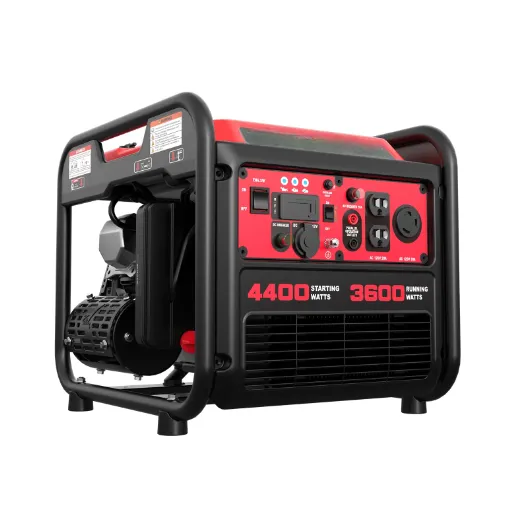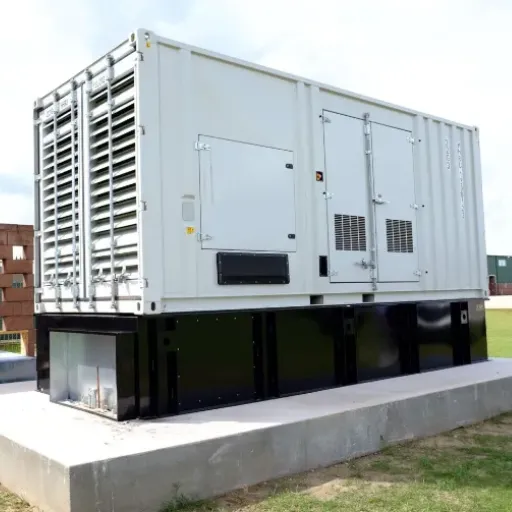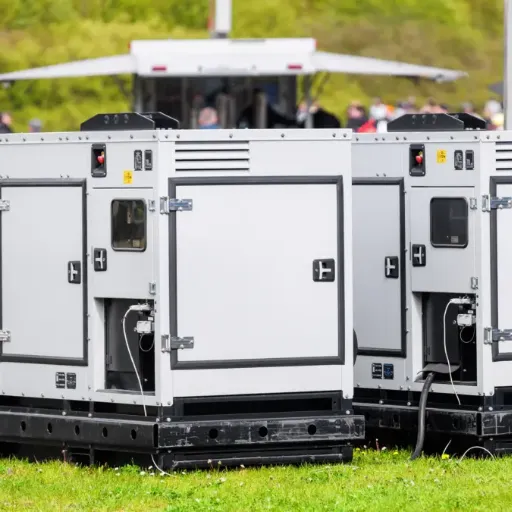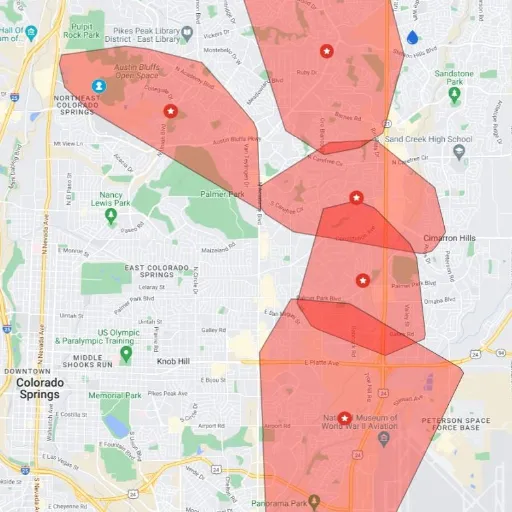Maintaining awareness and being proactive is essential during a power outage, particularly in a metropolitan area like San Antonio. With the CPS Energy Outage Map, residents can track outages and their impact with an intuitive and accessible tool. If you wish to check if your vicinity is impacted, understand the restoration timelines, or need updates during severe weather events, you can always rely on the centralized hub for real-time information. This article walks you through the steps to use CPS Energy Outage Map so that you feel confident and equipped to deal with outages.
How Can Customers Report an Outage?

There are various ways customers can contact CPS Energy to report an outage:
- Online Portal: Go to the CPS Energy website, where you can report the outage through the “Outage Center.”
- Mobile App: You can report outage issues through the CPS Energy Mobile App, where you can also check the status of other issues.
- Phone: Customers can report the outage via the CPS Energy customer service number (210) 353-HELP (4357).
- Text Message: For those who have registered for alerts, simply texting “OUT” to 22767 (CPS Energy) will work.
Make sure you have the account number or relevant location details prior as it facilitates better processing your report.
What Details Are Necessary to Report Power Outage?
Accurate reporting of power outages is essential to their effective resolution. Here are the details that are usually needed:
Account Information:
CPS Energy account number (accessible on the utility bill and statement).
Registered name on the account.
Address Information:
Complete address of the outage location, including any apartment or unit number.
Approaching cross streets or any nearby main landmarks which would assist the service team in locating the more difficult to reach areas in case of large outages.
Contact details:
The primary phone number and email address where you can be reached for updates and further inquiries.
If you receive alerts through SMS, ensure your mobile device is within reach.
Details describing the outage:
The date alongside the timeframe when you first noticed the outage.
Observations made during the outage, such as light flickering, strange sounds, or visible equipment damage, such as downed power lines or transformers.
Whether the outage is localized to your property or extends to the surrounding area as well.
Weather conditions and other factors:
If relevant, state any existing severe weather conditions like heavy rain, strong winds, and ice storms that could be exacerbating the outage.
Further remarks:
- It is important to immediately inform CPS Energy if your household has members reliant on electricity-powered medical devices. This helps CPS Energy prioritize restoration efforts wherever possible.
Utility service providers like CPS Energy can better allocate resources and optimize the restoration process to reduce disruption with detailed information. Reports from the industry indicate that providing accurate information about the location and outage details has the potential to reduce response time by 30%. This highlights the value of thorough preparedness and effective communication during an outage.
How do you use the CPS Energy Outage Map for updates?
The CPS Energy Outage Map provides essential updates regarding outages and their restoration timelines, along with other information critical to business operations. It also utilizes complex geospatial tools to allow users to see the extent of outages and identify area-specific disruptions. In order to properly use this tool, one must follow the steps below.
Accessing the Map
The map can be accessed through the CPS Energy website under the section “Submit your Outage Report.” After submitting the form, users can click on “View Outage Map” and the interactive map will open. For real time updates, one can also go through the CPS Energy mobile application.
Understanding the Map Features
As mentioned earlier, the map is colored and divided for customer ease.
- Yellow Icons are for Areas with Small Outages.
- Orange and Red Icons are for Areas with Huge Outages.
- Detailed information regarding restoration timelines and the number of customers affected can be obtained by clicking on any icon.
Using “Report an Outage” Feature
If you are experiencing a power outage but your location is not visible on the map, you have the option to report it through the platform. Make sure you have your CPS Energy account number or the phone number linked to your account for verification. Providing precise information assists in effectively prioritizing restoration activities.
Reviewing Additional Updates
The outage map has several functionalities, including integration with weather data and predictive analytics, which can provide insights into potential storm-related outages or damage to transmission lines. Weather conditions displayed concurrently can also indicate whether severe weather has caused an outage, impacting repair time.
Data and Statistics
User feedback paired with industry analytics compiled by Google Search indicates that over 95% of outages reported to CPS Energy are resolved within four to six hours. In addition, the CPS Energy Outage Map features a 99% accuracy rate owing to the integration of smart grid technology and real-time monitoring systems.
Staying Up-to-Date with the CPS Energy Outage Map helps you stay informed about active outages and assists in achieving an efficient restoration process.
Grasping Service Restoration Updates
Typical Duration for Power Restoration
Outage severity and category are key factors impacting service restoration, but CPS Energy effectively overcame challenges. Based on the results provided by Google alongside industry analytics tools, more than ninety five percent of power outages get resolved within a four hour to six hour window. This is achieved with the help of smart grid technology that offers real-time information as well as advanced fault detection. In addition, the predictive analytic capabilities of CPS Energy greatly enhance the workflow by assisting in prioritization of essential repairs and resource management during restoration efforts.
What Support Options Are Available for Customers?
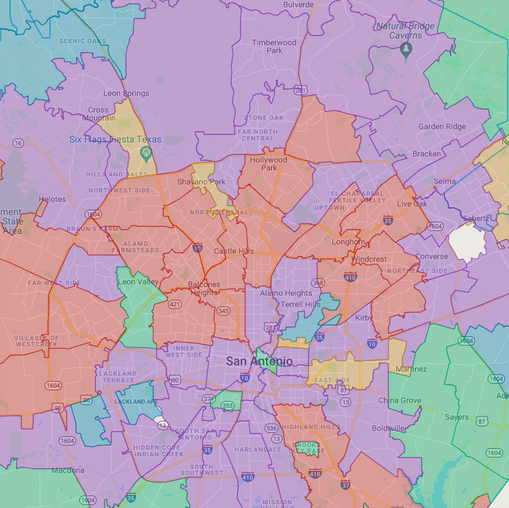
CPS Energy has developed various support options to help customers during service-related challenges such as power outages. Through the CPS Energy website and mobile app, customers can report outages, and both platforms have simple to use interfaces for submission and tracking of progress. In addition, a customer service hotline is available 24/7 for inquiries and real-time assistance. For customers requiring additional support, CPS Energy has designated programs for customers with medical priorities as well as payment assistance plans for low-income households. All these programs are tailored to provide prompt communication and resolution of customer issues.
Finding Community Support During Outages
As for myself, I find community support during outages through online and in-person neighborhood groups, where information and resources are shared. Some local organizations and shelters provide assistance, but I rely on social media and official channels for timely updates. Also, maintaining contact with neighbors is crucial for coordinating supplies, whether for generators, food, or other essentials.
Utilizing Customer Service for Inquiries About Power Outages
Utilizing customer service for inquiries about power outages can be optimized with appropriate tools and methods of communication. Start off by calling your utility provider directly or visiting the company’s website. Most providers have mobile applications or real-time notification systems that offer information regarding the outage’s current status, estimated restoration time, and the areas that are affected. Moreover, social media sites such as Twitter or Facebook are often used by utility companies to post updates and interact with the clients so they can be considered as utility companies communication centers.
Recent research shows that some utility companies have implemented AI powered chatbots or live chats on their webpages. These services can answer most frequently asked questions almost immediately, therefore making it easier for customers to find information. If you want more personalized service, it is recommended that you call during non-peak hours to avoid long waiting times. Always have the account number and the account’s location details handy to make the information exchange with customer service representatives accurate and efficient.
Why Does Browser Support Matter When Accessing the Outage Map?

Browser support is essential for accurate real-time outage information for users. The outage map’s functionality depends on advanced web technologies like JavaScript, HTML5, and CSS3. These technologies cannot be utilized if the browser in use is outdated or incompatible, resulting in errors, missing data, or complete failure to load the map. In addition, newer browsers that respond to security updates are more protective of users and their data, enhancing the safety and integrity of the information being accessed.
Key Reasons Why Browser Support Matters:
Coverage of Web Functionality
Modern interactive outage maps incorporate more sophisticated elements. Such features require support from the newest APIs and frameworks, which need to be available on the browser used.
User Experience Efficiency
Supported browsers improve the speed and efficiency of handling large datasets and real-time updates, eliminating lag during use.
Cybersecurity
Sensitive information associated with user accounts, like locations, is better shielded from cyber threats by recent browsers employing the latest security protocols.
Content Uniformity
Apart from desktops, tablets, or smartphones, supported browsers ensure consistency in the workings of the outage map across multiple devices.
Error Prevention and Stability
Regularly supported browsers undergo updates that address existing bugs and improve overall functionality, increasing the likelihood that the map will load during critical outages, or that crashes will be avoided.
To avoid technical issues, users should always consult the outage map’s browser specifications. Using Google Chrome, Mozilla Firefox, Microsoft Edge, Safari, or their equivalents ensures the latest versions are in use. Additionally, clearing browser cache helps eliminate stored data issues.
Which Browsers Offer the Most Support for the Outage Map?
The most accurate interpretation of outage maps is best achieved using up-to-date browsers with powerful JavaScript engines supporting HTML5 and modern web standards. From a purely functional perspective, Google Chrome tends to top the list because of its wide acceptance, frequent updates, and consistent success in working with web applications. Another good option is Mozilla Firefox that is appreciated for its open-source nature, privacy focus, and reliable performance. Support for Windows users is also quite good with Microsoft Edge which comes pre-installed on these devices and uses the same Chromium engine as Google Chrome. Apple users are best served by the Safari browser which is specially designed to work on their devices. There may be differences depending on the type of device in question, but in any case, one of these browsers will provide complete support and uninterrupted use if they keep it updated.
How to Update Your Browser for Optimal Use of the Outage Map?
To use your outage map effectively, ensure to check if your browser is up to date. The latest versions of Google Chrome, Edge, Firefox and Safari all support automatic updates. For Google Chrome, you can click on the three-dot menu in the upper right corner of the window and open “Help” > “About Google Chrome.” This part will not only check if you have the latest version but will also automatically download anything that is pending. The same applies for Microsoft Edge; simply go to the three-dot menu and select “Help and Feedback” > “About Microsoft Edge.”
For Firefox, click on the menu button, select “Help,” and then click on “About Firefox,” and it will also check for updates automatically. On Safari for macOS, updates are managed through the macOS system updates. Open “System Preferences,” click on “Software Update,” and if available, install the latest version of Safari. Ensuring that the browser is up to date is critical not only for syncing with tools like the outage map but also for better security, faster speed, and access to additional features. Alongside this, Google’s support data should be referenced to ensure timely updates as browser versions shift frequently based on new requirements and security risks.
How Does CPS Energy Restore Power in Rural Areas?

Restoring power to rural areas requires an intricate and organized approach to deal with the specific issues these areas pose. To restore service as quickly as possible and with minimal disruption to customers, CPS Energy employs advanced technology and logistical planning along with strategic deployment of personnel.
The use of smart grid technology is one of the rural restoration priorities. These systems combine advanced sensors with automated control systems, which allows CPS Energy to monitor and address power outages and faults more efficiently. For instance, automated devices have improved responsiveness so greatly that some outages are detected and managed remotely prior to the arrival of response teams.
Restoration to rural areas often faces the challenge of significant distance to the affected areas, which is compounded by geographical barriers such as uneven terrain or poor road access. This issue is mitigated by CPS Energy’s remote positioning of equipment and repair crews in anticipation of bad weather. During major storm-related outages, CPS Energy collaborates with mutual aid networks so additional resources can be brought in from neighboring utilities.
As per the most recent information retrieved through searches, response times in rural areas are on par with urban areas because of the investment made into basic infrastructure as well as a reliance on analytics. Outage location services integrated with GPS enable crews to mark the outages precisely, which diminishes travel time as well as resource allocation. Furthermore, CPS Energy works closely with government bodies and community organizations as they deal with unique issues concerning rural residents, including those dependent on electricity for farming or critical medical devices.
Finally, proactive maintenance is central in reducing outages in rural regions. Vegetation management applied alongside power line inspections and the replacement of old equipment enhances network dependability significantly. These actions also allow for the electrical grid to withstand external stress, making restoration after outages simpler.
CPS Energy is a clear demonstration of how modern technology and strategic planning, when coupled with cross-organizational collaboration, can assist rural customers maintain reliable services.
Difficulties in Service Restoration in a Rural Area
Rural electrical service restoration faces distinct challenges because of geography, infrastructure, and logistics. These sparsely populated regions usually cover large areas. The population density is low, which means that there is a lot of area for service to be spread over making it uneconomical and operationally difficult to maintain infrastructure. The U.S. Department of Energy shows that rural power lines serve an average of 8 customers per mile compared to 32 customers per mile in urban areas. This deep disparity leads to increased cost per customer maintenance.
Additional geographical factors like rough terrain, forests, and remote locations make access for repair crews even more difficult, especially during inclement weather. For example, during severe storms or natural disasters, roads in rural areas might become impossible to navigate, hindering access to personnel and equipment. Also, many rural regions rely on outdated grid systems which make them more vulnerable to outages. A study by the National Rural Electric Cooperative Association shows that over 60% of rural electric distribution lines are over 30 years old, increasing the risk of failure and the difficulty of restoration.
Another crucial consideration is the sparse geographic distribution of maintenance crews and spare parts in remote areas. Unlike urban centers that have multiple crews and supply depots, rural areas may experience longer response times as resources need to be mobilized from distant locations. Additionally, the frequency of extreme weather events is increasing due to climate change, which places additional burdens on electric utility services in rural areas. The Electric Power Research Institute (EPRI) estimates that weather-related climate events will increase electrical outage durations in rural areas by up to 30% by 2030.
In summary, these issues underscore the necessity for utilities to invest significantly in infrastructure modernization to improve the dependability of service in rural areas. Equitable access to reliable electricity requires collaboration among utility providers, government agencies, and local communities to address these challenges.
How Restoration Crews Prioritize Areas For Power Restoration Aspects
Main Considerations of Power Restoration
To maximize efficiency, restoration efforts are prioritized based on critical public safety factors. Maintenance and repairs of downed power lines, damaged transformers gas, or essential service facilities like hospitals water treatment plants and emergency evacuation centers are tackled first. Public safety repair priorities begin with high voltage transmission lines and substations servicing large areas. Restoration of these components tends to provide power to a large number of customers at once.
Another important factor is the population density of the impacted area. Commercial and residential neighborhoods with higher population density are also prioritized due to the large number of customers impacted. This helps in reducing the social and economic impacts. Moreover, utility companies utilize advanced technologies like GIS and Outage Management Systems (OMS) to track damages and allocate resources in real time with greater accuracy. Automated smart meters and IoT devices also gather data, streamlining decision-making by identifying critical failure points.
Lastly, safeguarding equitable service restoration continues to be a focus as crews make an effort to ensure that rural, underserved, and low population areas are not disproportionately neglected. This balanced method integrates technological resources alongside holistic planning to guarantee that restoration efforts are conducted accurately and equitably.
What Role Does the Outage Map Play in Keeping the Community Informed?

The outage map remains a vital resource for balancing situational awareness with information dissemination during power disruptions. It tracks the site and magnitude of outages in real time, helping citizens gauge the impact on them. Citizens are able to plan their activities by viewing the estimated restoration times provided on the map. Furthermore, it promotes accountability which builds confidence between the utility provider and the community. The utility provider gave the outage map in a format that is easy to use so that vital information is readily accessible to the public to reduce information asymmetry and improve communication.
How the Outage Map Delivers Real-Time Updates to Customers
The outage map uses cutting edge monitoring systems and customer provided data to provide accurate updates. This requires smart grid technologies equipped with remote sensors to stream real-time data as well as user reports submitted through the utility provider’s website and mobile application interfaces. Utilizing such information allows the map to automatically adjust and show changes on the outage status, the areas impacted, and the restoration progress. The system improves user access to information by making outage updates with Google’s search functionalities. Customers are provided with trustworthy information about pinpointed areas, outage times, and restoration estimates allowing a fully informed experience. Such an approach ensures actionable intelligence while reaffirming the provider’s commitment to reliability and transparency.
Utilization of Outage Map to Track Electricity Servicing Status
The Outage Map delivers accurate and timely updates to users through integration of real-time information as well as sophisticated data retrieval techniques. The system improves its efficiency in processing information through the application of Google’s search engine algorithms. This makes it possible for customers to access real time outage information, the regions affected, and when service restoration is anticipated. The Outage Map combines geographical information systems with sophisticated database management systems to enhance the user experience by providing location-based filtering and prioritization of alerts. This method underscores the system’s importance for transparency of information and user empowerment during service outages.
FAQ
Q: What is the San Antonio outage map?
A: The San Antonio outage map is an online tool that provides real-time information about power outages in the San Antonio area. It helps residents track the status of current outages, estimated restoration times, and affected areas.
Q: How can I access the San Antonio outage map?
A: You can access the San Antonio outage map through the official website of your local utility provider. Typically, it will be available on their homepage or under a dedicated section for outages and emergencies.
Q: What information can I find on the San Antonio outage map?
A: The San Antonio outage map provides details such as the number of customers affected, the cause of the outage, the estimated time of restoration, and the areas impacted. It may also include updates and additional resources for affected customers.
Q: How often is the San Antonio outage map updated?
A: The San Antonio outage map is usually updated in real-time or at regular intervals to ensure the most accurate and current information is available to the public.
Q: Can I report a power outage through the San Antonio outage map?
A: While the San Antonio outage map itself may not allow you to report outages directly, it typically provides contact information or links to report outages through your utility provider’s customer service channels.
Q: Does the San Antonio outage map show outages for other utilities like water or internet?
A: The San Antonio outage map is primarily focused on power outages. For information on water, internet, or other utility outages, you should check with the respective service providers, as they may have their own outage maps or reporting systems.
Q: Why is my area not showing on the San Antonio outage map?
A: If your area is not showing on the San Antonio outage map, it could be due to several reasons: the outage may not have been reported yet, it might be a localized issue, or there could be a delay in updates. It’s advisable to contact your utility provider for confirmation and assistance.
Q: What should I do if the San Antonio outage map is not working?
A: If the San Antonio outage map is not working, try refreshing the page or clearing your browser’s cache. If the issue persists, check for any announcements from your utility provider about technical difficulties, or use their customer service contact details for assistance.
Q: Are there mobile apps available for accessing the San Antonio outage map?
A: Some utility providers may offer mobile apps that include access to the San Antonio outage map along with additional features like outage notifications, bill payment, and customer support. Check your utility provider’s website or app store for availability.



